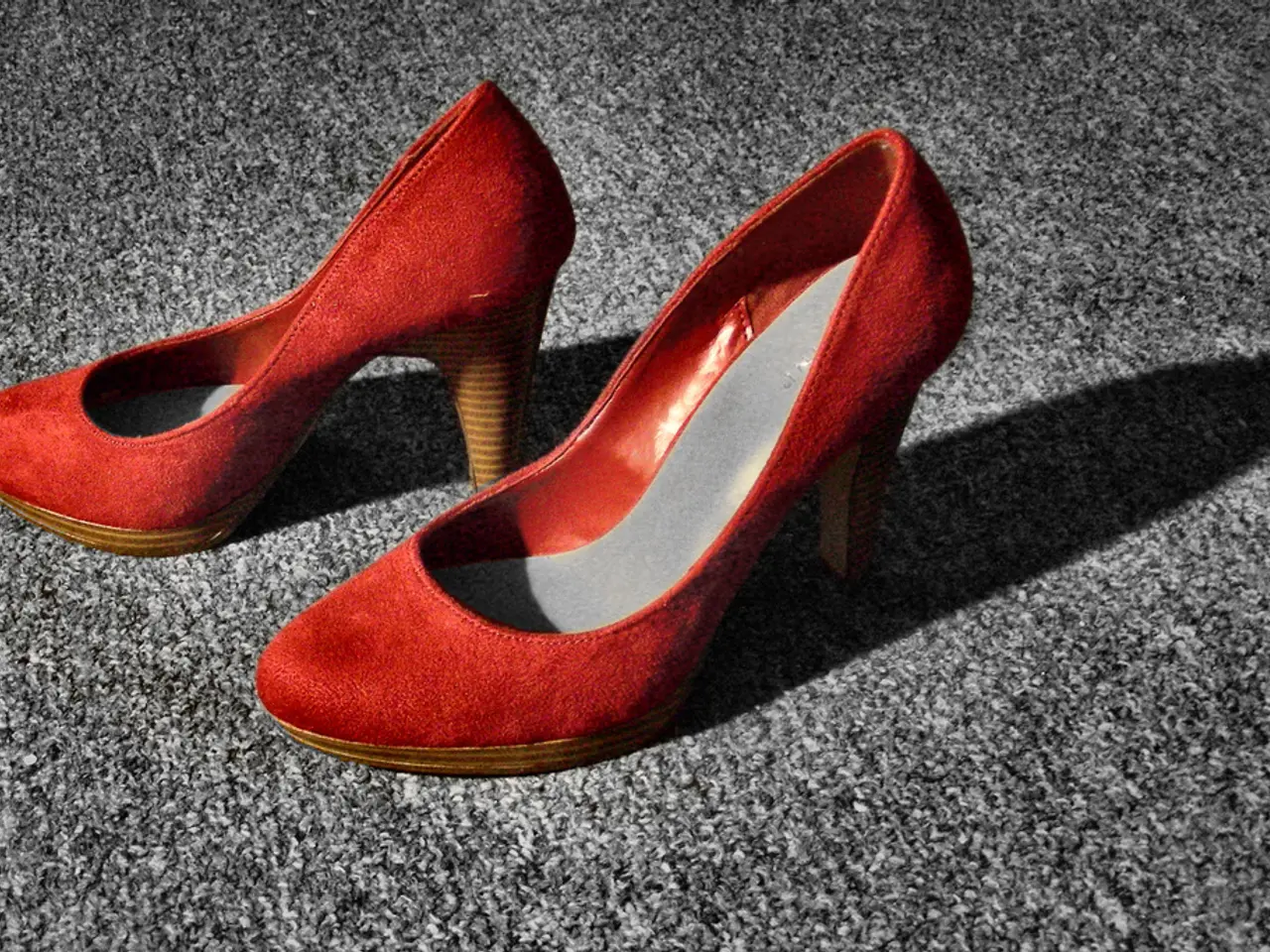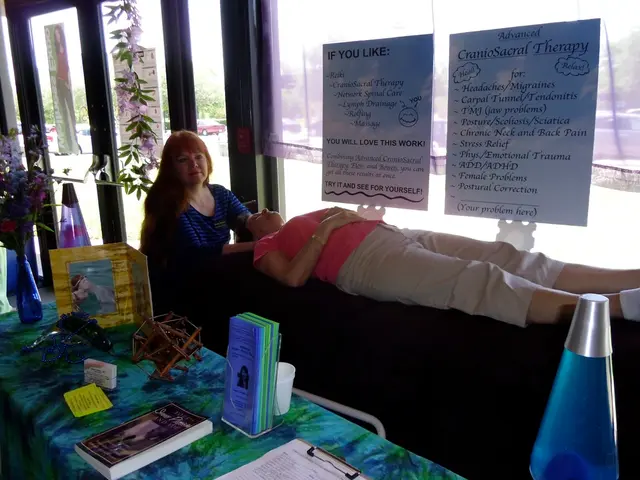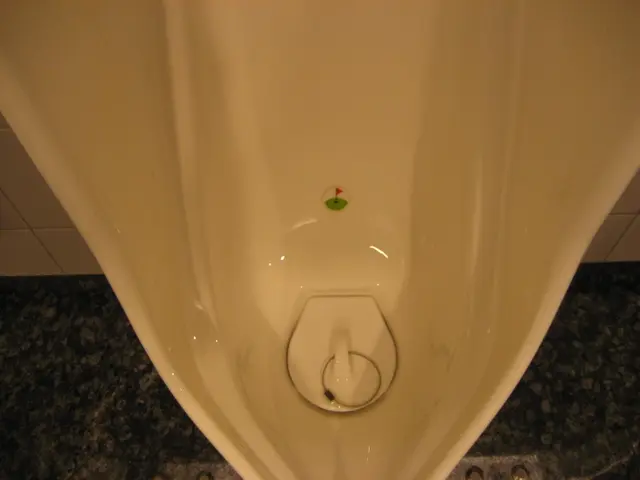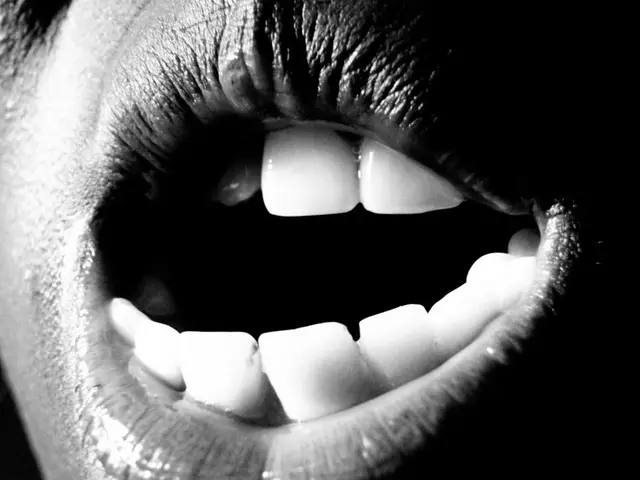Solutions for Misaligned Toes: A Guide
=======================================================================================================
Many people may experience toe deformities, such as Hallux Valgus, Schneider Bunion, Hammer Toe, and Claw Toe, which can cause discomfort and affect foot function. Dr. Thomas Schneider, an orthopedist from the Gundelfingen Joint Clinic, explains these common deformities.
Hallux Valgus (Bunion)
Hallux Valgus is a toe deformity characterised by the big toe tilting towards the outer edge of the foot. This deformity occurs due to a valgus (outward) deviation of the big toe's proximal phalanx, causing the first metatarsal bone to shift medially, resulting in a bony bump on the inside of the foot.
Causes of Hallux Valgus include chronic use of tight, narrow-toed shoes, high heels, and a possible genetic predisposition. Symptoms include pain, swelling, and a visible bump at the base of the big toe, with discomfort worsening by wearing tight shoes.
Treatment for Hallux Valgus begins with conservative management, such as shoe modifications, orthotic devices, toe spacers, and pain relief (NSAIDs). If symptoms persist, surgery may be considered, tailored based on the severity of the deformity.
Schneider Bunion (Tailor’s Bunion)
Schneider Bunion, also known as Tailor’s Bunion, is an enlargement or deformity of the fifth metatarsal head. This deformity is more common in females and often bilateral.
Symptoms of Schneider Bunion include pain and prominence on the outside of the foot near the little toe. Treatment for Schneider Bunion involves NSAIDs, shoe modification, orthotics, and surgery if conservative care fails, which may involve reshaping the metatarsal bone or tendon procedures.
Hammer Toe
Hammer Toe is a deformity where the toes bend abnormally at the middle joint, causing pain, corns, calluses, and difficulty wearing shoes. Hammer Toe is most commonly caused by long-term use of poorly fitting shoes, especially those with a narrow toe box or high heels pushing toes into a bent position, muscle imbalances, trauma, and underlying medical conditions such as rheumatoid arthritis, diabetes, and neuromuscular diseases.
Flexible deformities may be treated with tendon procedures such as tendon lengthening or tendon transfer surgeries. Conservative measures include footwear changes and orthotics.
Claw Toe
Claw Toe is a deformity where toes are bent into a claw-like shape, causing difficulty in foot function, pain, and corns. Claw Toe is typically related to neurological or muscular imbalances that cause hyperextension at the metatarsophalangeal joint and flexion at the interphalangeal joints.
Non-surgical care for Claw Toe involves shoe modification, orthotics, physical therapy, and exercises. Surgery may be required to correct severe or rigid deformities, but this depends on individual cases.
In general, tight or ill-fitting shoes with narrow toe boxes and high heels are a recurring cause for many of these deformities. Medical conditions like rheumatoid arthritis and diabetes increase the risk by damaging joint or nerve function. Conservative treatments focus on shoe modifications, orthotics, physical therapy, and pain management. Surgical options vary based on deformity severity and specific structural abnormalities, often involving bone realignment, tendon lengthening, or transfers.
To prevent toe deformities, it is advised to wear shoes that give the toes room to move but still provide support. Regularly consulting a doctor is advised if there are concerns about toe deformities and discomfort. A grippy, non-slip sole and a stable heel counter are important for stability during walking. If toes are causing discomfort or there are pressure points, it's recommended to consult a doctor about potential treatments for crooked and misaligned toes.
- Maintaining good health-and-wellness, and avoiding shoe styles that hinder foot function, such as tight and narrow-toed shoes, can help prevent toe deformities, like Hallux Valgus, Schneider Bunion, Hammer Toe, and Claw Toe.
- In addition to seeking medical attention for foot deformities, fitness-and-exercise, proper nutrition, and adopting a healthy lifestyle can contribute to overall foot health, potentially reducing the risk of developing these conditions.
- To manage foot discomfort caused by medical-conditions, such as diabetes or rheumatoid arthritis, and to prevent the onset of toe deformities, it's essential to follow a healthcare provider's recommendations on footwear selection and maintain regular check-ups for early intervention and treatment.




